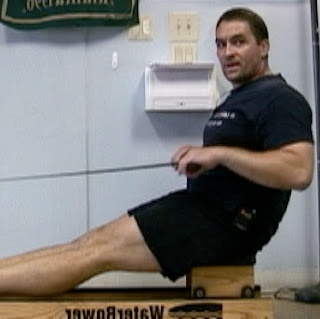Hello Folks,
My strength has always been my motivation to train. Now, being father of four, and head of a Zoo, fanatic workouts is something in the distant past. The problem that emerged from all this is that I turned into a beast. I can literally squish people if I chose to roll over them, "people" being my own children sitting on the couch with me.
I have done diets, some have been more successful than others. Most seemed to have cost a bit of money. I also would rebound quite well from the newly acquired low weight. I fit the profile perfectly, yo-yo-weight-man, I hate it.
About 9 days ago, I spoke to a rower in Canada. We chatted about fitness business and we both keenly shared that we read the 4 Hour Workweek. Then, I was told that I should read the 4 Hour Body, which I heard of before, but quite simply was not enough in distress to buy and read. Ironically, when I spoke to my rowing friend, my distress level reached the boiling point. My body weight was at an all time high and I medicated my heart burn with baking soda.
Fast forward to today, I am 13 pounds lighter and already feel a lot better. What changed? I started reading the 4 Hour Body, and implemented the chapter on slow carbs. No more in my diet was: Milk, white carbs, sugar drinks, rice, bread...., I substituted carbs with lentils and beans, amazing, I never had eaten many legumes, but here they were, being happily consumed by me instead of bread and pasta.
It is ironic that one is open to change at different times throughout life. Who knows, had I known of the slow carb diet... a la 4 Hour Body, I would have gone even faster during my competitive years.
 |
| Tim Ferris author of the 4 Hour Body |
The purpose for this blog entry, is not to shamelessly troll for new business of which I can be guilty of at times. In the contrary, I would like to simply share great information. Exercise is great for building capillaries, enjoying endorphins, building stronger muscles and bones, but it is pretty lame for weight loss. It is true that exercise helps you burn energy of different fat and glycogen, but it is very inefficient and often leads to increased appetite :-0, and in some case a pulled muscle in the back...
If you are like me, give the 4 Hour Body a shot :-)
Xeno
Xeno Muller, Olympic gold and silver medalist, indoor rowing, rowing technique.






.JPG)
















